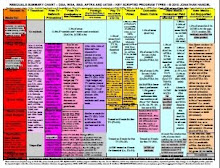Leaves The Hollywood Reporter; will continue to practice entertainment/tech law; writes at jhandel.news
LOS ANGELES (September 8, 2020) – SAG-AFTRA has engaged entertainment/technology attorney and journalist Jonathan Handel as an outside Special Counsel to the union, effective Sept. 1, to work on special projects and cutting-edge issues.
Handel brings a deep familiarity with SAG-AFTRA and with entertainment, technology, law and labor. He is a 30-year practicing attorney and covered the entertainment industry for The Hollywood Reporter for a decade.
SAG-AFTRA Chief Operating Officer and General Counsel Duncan Crabtree-Ireland said, "We are thrilled to have Jonathan working with SAG-AFTRA and look forward to engaging his talents on a number of crucial issues and projects. He is an accomplished and forward-thinking attorney with a talent for incisive analysis, which coupled with his entertainment industry expertise perfectly positions him to help advise on complex matters for the union."
“This is a time of enormous economic and technological challenge for all SAG-AFTRA members,” said Handel. “Working- and middle-class people are under assault in this country, and our industries are no different. I’m excited and grateful to have the opportunity to help tackle some of the toughest problems ever faced by the union’s members – many of whom I have the privilege to call friends – and I hope to make an enduring contribution to their careers, well-being and basic dignity.”
Handel has left his post at The Hollywood Reporter, but will continue to practice entertainment and technology law for other clients that do not conflict with SAG-AFTRA assignments. As part of the agreement to engage Handel, the union is also acquiring an app that the lawyer and technologist wrote to help members navigate their health insurance options.
Handel is a magna cum laude graduate of Harvard College with a degree in applied math and computer science and received his Juris Doctorate, cum laude, from Harvard Law School. He was active in LGBTQ and party politics and wrote a local civil rights ordinance in addition to serving on various city commissions. He clerked for a federal court of appeals judge, practiced appellate litigation, served as a federal Associate Independent Counsel investigating alleged White House political misconduct, and was a member of the Writers Guild of America, West, legal staff, before transitioning to entertainment and technology transactional law, negotiating for a range of clients.
The author of four books on entertainment labor, including a full-color guide to residuals based on his industry-leading chart, Handel is currently on the adjunct faculty at USC Gould School of Law and Southwestern Law School and is a non-resident research fellow at the Rutgers School of Management and Labor Relations’ Institute for the Study of Employee Ownership and Profit Sharing. He is a widely respected industry commentator and has made more than 1,100 media appearances. He is also a prodigious writer of television scripts, stories, stage plays and poetry and is a member of the Alliance of Los Angeles Playwrights and an associate member of the Dramatists Guild and the Society of Composers & Lyricists.
Coverage: The Hollywood Reporter, Variety, Deadline, SAG-AFTRA website







